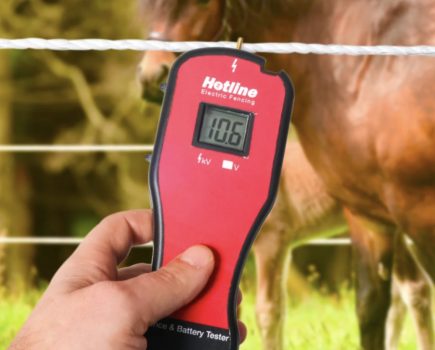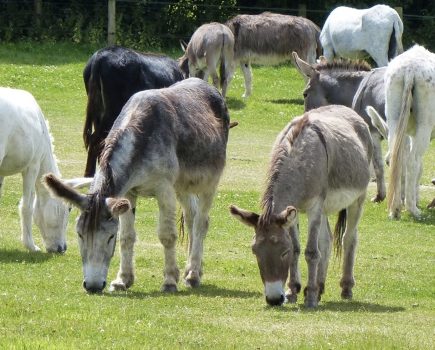What livestock should you choose for your smallholding? Alan Beat has many years experience with animals. Here is his advice
New entrants to smallholding often ask ‘which breed of hens/ducks/sheep/pigs/cattle should we buy?’ Unfortunately, there is no simple answer. It depends on many different factors, not least of which is personal preference. However, I suggest that some commonsense principles can be applied to all types of livestock: • Buy healthy stock from a reliable small-scale source; • Keep them as naturally as possible; • Rotate them regularly to fresh ground; • Avoid overstocking; • Feed and house them properly; • Learn their normal behaviour through regular observation. Do these simple things and you should have very few problems. This article examines the first of these principles in more detail. Preparation Please, please don’t even think about buying your first livestock until you have made adequate preparations. Ensure that field boundaries are stockproof; that sufficient grazing or fodder is available; that appropriate housing and handling facilities are in place and that you have a fair grasp of how to look after them. Don’t fall into the trap of buying on impulse at a show or sale and think that you can rig something up with baler twine and old pallets ‘just for the time being’ when you get home. Such temporary arrangements are never satisfactory and risk becoming rather more permanent than intended! It’s far better to plan and prepare in advance. Personal preference There are many different reasons for keeping livestock, but perhaps the most important is that you take pleasure in doing so. You’ll be spending a part of every single day in their company, and if that becomes a chore rather than a pleasure, you are not going to succeed with them – it’s as simple as that. So try to acquire some hands-on experience to inform your choice. Consider enrolling for a short training course covering the livestock that interest you, or offers a general overview to help you focus. Visit www.yarnertrust.org for courses that Rosie and I lead, or www.lowimpact.org for a nationwide selection. Visit established smallholders to learn from their experience, and offer to help with routine tasks that enable contact with the type of stock that interest you. Handling large livestock can be daunting and may not suit you personally. Keeping geese may seem attractive, but will you cope with an aggressive gander? Milking goats may appeal, but have you ever tried – and can you stand the smell of a billy? It’s much better to explore such things before you buy, rather than afterwards. A good route to practical experience is through WWOOF (World Wide Opportunities on Organic Farms), which enables you to work on smallholdings and farms in exchange for board and lodging; visit www.wwoof.org Another option is to initially let out your grazing to a local smallholder or farmer with the type of stock that interests you. Useful knowledge and confidence is acquired through regular observation and from conversation with their owner. If you permit them to lamb, calve or kid in your outbuildings, you’ll experience normal and problem birthing as well. This is how Rosie and I learned about sheep management before starting our own flock. Spend time on the source farm of your potential livestock to gain familiarity with them and ask questions of the vendor. Most breeders are enthusiastic about their animals and it’s not in their interest to sell stock to someone who is unsuited to keeping them, so they may want to question you in turn! Pedigree Beginners are often advised to buy quality pedigree stock from a reputable prize-winning breeder. Such breeders play a vital role in maintaining and developing the wide range of livestock breeds that we enjoy today. The rare breeds, in particular, are often suited to a smallholding life and are especially deserving of our support.
However, I strongly suggest that pedigree livestock are not the ideal first purchase for the raw novice.Pedigree strains have been selectively bred over many generations for certain characteristics. The promotion of specific attributes usually comes at the expense of others, and impacts on general qualities such as hardiness, prolificacy and longevity. As breeds diverge further from the natural form, there is an associated increase in dependence on human care and intervention to maintain health and well-being. To give a simple example, primitive sheep shed their fleece naturally each spring, whereas the more developed breeds require shearing. To establish the reputation of his or her pedigree stock, the breeder needs to show them and to win prizes; but showing promotes physique and visual appeal over utility attributes, so that prize-winning stock may lack the practical characteristics that most interest the smallholder. To win consistently around the shows against stiff competition requires considerable effort and commitment alongside expert stockmanship.
All this indicates that trying to keep and breed pedigree stock is not for the fainthearted; nor, I suggest, is it for the novice. Instead of starting at the top end of the scale, I think the novice is better advised to first gain practical experience with crossbred or commercial stock that are cheaper, hardier and more widely available. When two pure breeds are crossed, the resulting progeny grow faster to a larger ultimate size than either parent; they are also usually healthier, hardier and more prolific breeders. These characteristics are collectively known as ‘hybrid vigour’. Commercial farming takes advantage of this in various ways, for example, using crossbred ewes to combine the prolificacy of one breed with the heavier lamb carcase of another. Commercial strains often arise, not from pedigree stock, but from animals with the general characteristics of a breed. Such livestock may be far removed from any traceable pedigree, but, nevertheless, exhibit the practical attributes of the breed that smallholders value. Both crossbred and commercial stock will exhibit a wider variance than pedigree animals, but uniformity may not necessarily be desirable for the smallholder, in fact, diversity may be a distinct advantage. Both these types of livestock are easier to source and cheaper to buy than pedigree stock. The progression to pedigree stock, if that is the long-term aim, can follow as experience grows.
SOURCING STOCKAn important consideration to the smallholder is docility. For example, sheep from the uplands may be as wild as the hills they graze, unused to confinement by fencing and unworkable except with a well-trained dog. Most commercial sheep are also worked with dogs and hence fear humans by association. However, I suggest that a sheep flock worked without dogs, but instead trained to trust humans and follow a food bucket, is far easier for a novice to manage; so buying your starter flock of tame, bucket-trained sheep from a small scale breeder provides a sensible foundation on which to build. This principle applies across the spectrum; all livestock that are handled regularly, and are relaxed in close human company, are quieter and more easily managed. To give an extreme example, I once bought some weaners (young pigs) from a semi-feral herd that roamed a large acreage without any close human contact. The owner rigged up a temporary catching pen of wire mesh panels into which the piglets were lured by food and then trapped. When he approached the pen, the pigs went berserk and ricocheted around at high speed while attempting to jump straight through the mesh sides – they were terrified. Somehow, we manhandled five squirming piglets into my trailer, although one jumped out again over our shoulders and sprinted away, never to be seen again! Back at our smallholding, all I glimpsed of these pigs for the first fortnight was their backsides as they ran to hide in their house whenever approached. With patience and a regular feeding routine, they did eventually learn to tolerate my presence, but never allowed themselves to be touched and so remained difficult to move or handle.
Those pigs were completely unsuitable for a novice to buy. In contrast, weaners from a well-managed smallholding, are normally docile and human-friendly right from the start, making their handling and management so much easier.
So, enquire locally for smallholdings with livestock for sale. Check advertisements in local agricultural merchants and newspapers, and national magazines like CS. I recommend visiting the source farm or smallholding before making the decision to purchase. Never mind if you are a novice – common sense is your guide. Ask to see the breeding stock as well as their offspring and look at the conditions in which they are kept.
Animals that are healthy and thriving will be clean, bright-eyed, alert, active and inquisitive, with a shine to their coat – though if pigs have full bellies, they may be contentedly sleeping! Look for a good level of rapport between the vendor and his livestock. Ask plenty of questions; a good breeder will be happy to answer. If not, look elsewhere.
Finally, beware of buying at a commercial market. It is so easy to make a bad mistake when you lack experience and, obviously, you can’t inspect the source farm either. If you really must follow that route, take along someone knowledgeable to advise you, and learn from them.Writers
Alan Beat and his wife Rosie have run a Devon smallholding of 16 acres for more than 20 years. See their website at www.thebridgemill.org.uk







